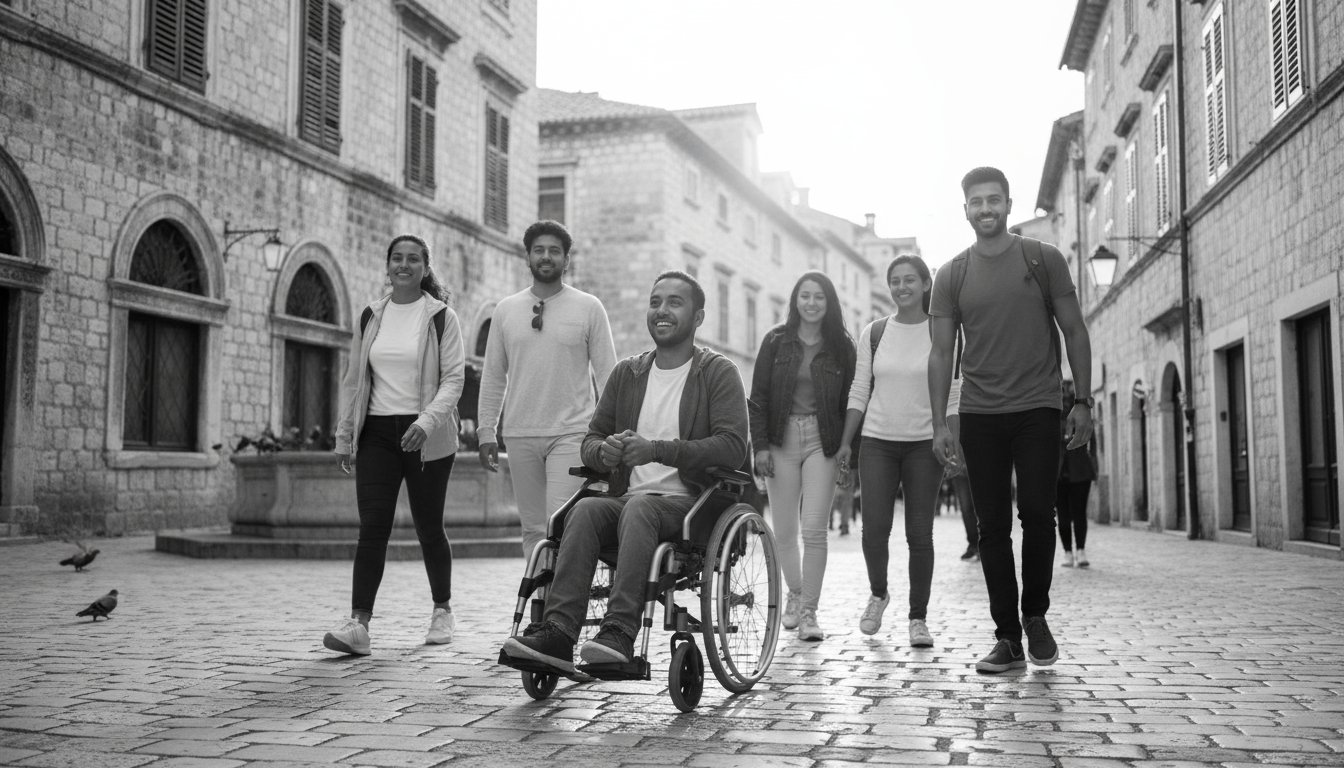The travel industry has evolved from a luxury reserved for a few to a universal human right — the freedom to explore. Yet, millions of people with disabilities still face barriers when trying to experience the world. Inclusive travel planning aims to change that narrative by making destinations, accommodations, and experiences accessible to everyone, regardless of mobility, sensory, or cognitive limitations. In 2025, accessibility is no longer an afterthought; it’s an essential part of global travel design.
Understanding Inclusive Travel
Inclusive travel refers to the design and delivery of travel experiences that consider the diverse needs of all travelers. It goes beyond wheelchair ramps — it’s about creating environments where everyone can move, communicate, and participate equally. Accessibility encompasses everything from airport assistance and hotel layouts to digital booking platforms and cultural sites.
According to the World Tourism Organization, over one billion people worldwide live with some form of disability. This represents not only a moral responsibility but also a significant market opportunity for destinations that prioritize inclusivity.
The Role of Technology in Accessibility
Digital innovation has transformed the travel experience for people with disabilities. Mobile applications now provide detailed accessibility maps, voice-guided navigation, and real-time updates about accessible facilities. AI-powered travel assistants help travelers book suitable hotels and routes, while virtual reality (VR) allows users to preview spaces for accessibility before booking.
For example, Google Maps’ “Accessible Places” feature highlights wheelchair-friendly entrances, restrooms, and parking areas. Similarly, Booking.com and Airbnb have introduced advanced accessibility filters that enable travelers to find properties equipped with adaptive bathrooms and step-free access.
Destinations Leading the Way
Some destinations have made remarkable progress toward inclusivity.
- Barcelona offers fully accessible beaches with amphibious chairs and trained lifeguards.
- Singapura integrates universal design principles across its urban infrastructure.
- Sydney provides tactile street indicators and visual cues for low-vision travelers.
These cities prove that inclusivity benefits everyone, not just those with disabilities. When spaces are designed with accessibility in mind, comfort, safety, and convenience improve for all visitors.
Inclusive Transportation Systems
Transportation often presents the biggest challenge for travelers with mobility issues. Modern airports and train stations are now implementing tactile paths, braille signage, and dedicated assistance staff. Many airlines also provide onboard wheelchair storage and specialized seats.
Additionally, ride-sharing platforms such as Uber and Bolt now offer “Assist” and “Access” options — vehicles equipped with ramps or extra space for passengers who require assistance. These small yet impactful innovations bridge the gap between independence and dependence for many travelers.
The Power of Awareness and Training
True inclusivity extends beyond infrastructure. It requires empathy, awareness, and education. Hospitality professionals must understand how to interact respectfully with travelers who have disabilities. Many hotels now train their staff to assist guests with mobility or hearing challenges, ensuring dignity and comfort throughout the stay.
Organizations like “Accessible Travel Forum” and “Open Doors Organization” provide certification programs to encourage inclusive practices across the tourism sector. These efforts collectively build a culture of accessibility that benefits the entire travel ecosystem.
Designing Accessible Experiences
Accessibility should be built into the design phase of every attraction, not added as an afterthought. From guided museum tours with sign language interpretation to adventure activities with adaptive equipment, inclusive design enables travelers to experience destinations fully.
Some companies specialize in adaptive tours — such as wheelchair-accessible safaris in Africa or diving experiences for people with limited mobility. These innovative approaches show how creativity and compassion can open new worlds for travelers once excluded.
Future of Inclusive Travel
The future of tourism lies in personalization and inclusivity. As artificial intelligence continues to shape the travel industry, accessibility data will become integrated into every aspect of trip planning. Smart cities of the future will automatically adjust routes, lighting, and public services based on travelers’ accessibility preferences.
Inclusive travel is not a niche — it’s the future of tourism. The more accessible the world becomes, the richer the experiences it offers to everyone.

 Inclusive Travel Planning: Making Destinations Accessible for Everyone">
Inclusive Travel Planning: Making Destinations Accessible for Everyone">
